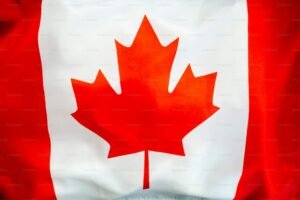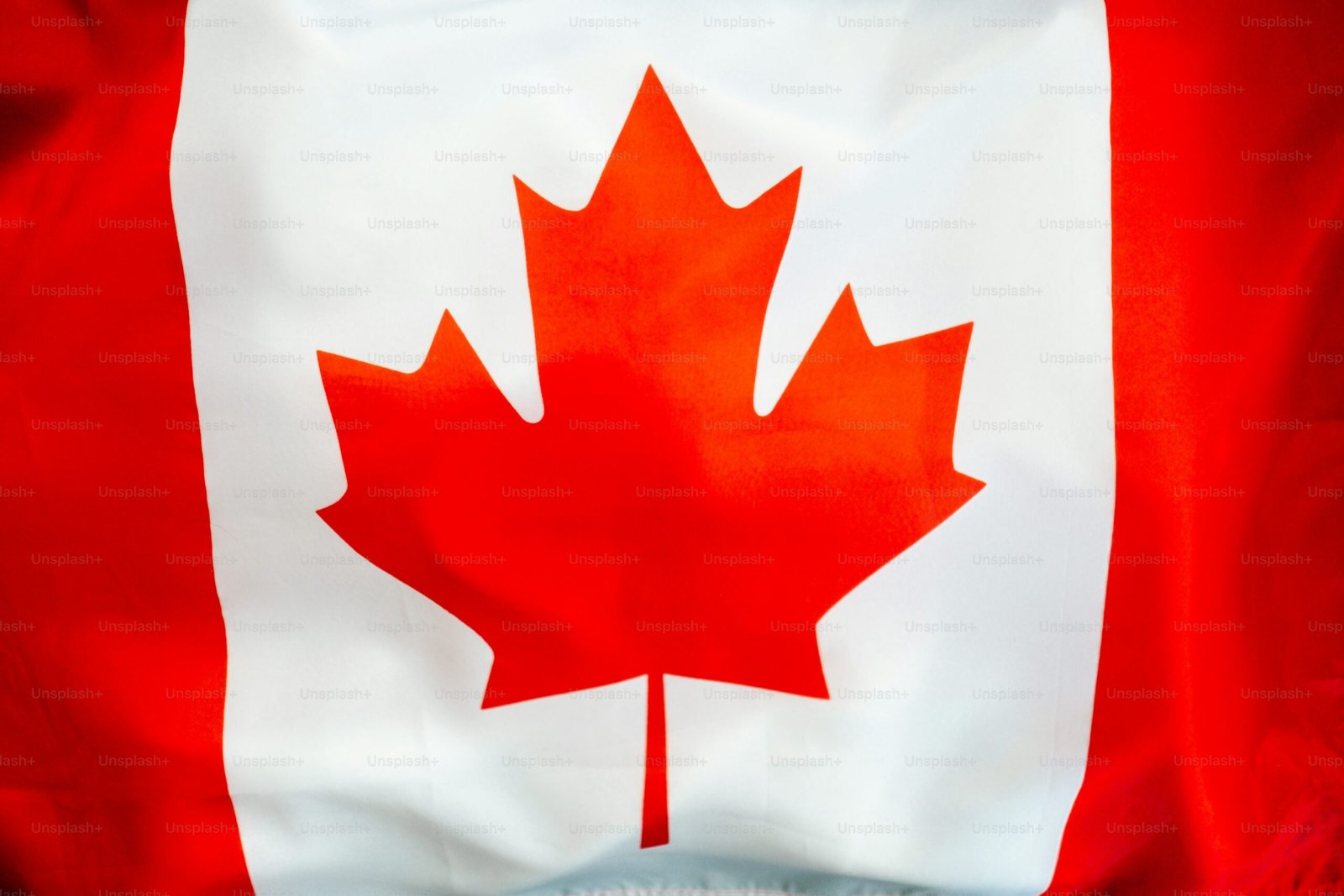Geography of Canada • Maps • Interesting Facts • Flag
- Area: 9,984,670 sq km
- Population: Over 39 Million
- Population Density: ~4 people/ km ²
- Climate Type: Mostly subtropical
- Dominant Language: English
- Dominant Religion: Christianity
- Currency: The Canadian Dollar
- Government: Federal parliamentary democracy
- GDP: 2.238 trillion USD
- Major Export: Crude petroleum, cars, natural gas, refined petroleum, gold
- Capital: Ottawa
- Iconic Monuments: Lake Louise, Peggy’s Cove Lighthouse
Canadian Flag:

The flag has two vertical bands of red (hoist and fly side, half width) with a white square between them; an 11-pointed red maple leaf is centered in the white square; the maple leaf has long been a Canadian symbol
History of Canada:
Approximately 15,000 to 30,000 years ago, a land bridge connecting Asia and North America welcomed the first humans to Canada.
The French and British arrived as colonizers in the sixteenth century. Between 1689 and 1763, four battles broke out as a result of land disputes between farmers and fur traders. The French continued to have a significant effect in Canada even after the British gained control of the country during the French and Indian War.
A dominion with its own prime minister, parliament, and administration was established in 1867 by the union of Ontario, Quebec, Nova Scotia, and New Brunswick. Manitoba enrolled shortly after. Canada gained its independence in 1931.
Read more about Argentina : HERE
Canada Geography:
Canada is a huge, unexplored country. It covers more than half of the Northern Hemisphere from north to south. It spans six time zones and over 4,700 miles (7,560 kilometers) from east to west. Despite being the second largest nation in the world, its population barely makes up 0.5 percent of the global total.
Canada is home to many rivers, central plains, stunning western mountains, forested eastern valleys, and black-blue lakes. Some of the oldest rocks on Earth can be found in the mountainous, marshy Canadian Shield, which spans northern Canada.
The Arctic’s icy encloses Canada’s far north, where the terrain is dominated by glaciers, ice, and snow. It’s not possible to farm here, and not many trees grow here. This area is home to First Nations people, or Native Canadians, who make their living from fishing and hunting.
Canada Map

Canada Interesting Facts
- Second Largest Country: Canada is the second largest country in the world by land area, covering almost 10 Million km ² ( 9.98 million km ²). However, Canada is less crowded with its population relatively small for its size. Canada has a population of around 38 million people. Interestingly most of its people live closer to the US-Canada border.
- Longest Coastline: Canada has the longest coastline of any country in the world, stretching over 202,080 km along three oceans – Atlantic, Pacific, and Arctic.
- Multilingual Nation: English and French are official languages but over 200 languages are spoken in Canada.
- Home to the Northern Lights: Similar to Norway and Iceland, Canada is home to the Aurora Borealis or Northern Lights and it can be seen from several parts of Canada, particularly in northern regions like Yukon, Northwest Territories, and Nunavut.
- Maple Syrup Capital: The country produces about 70% of the world’s maple syrup. Quebec alone accounts for more than 90% of that.
- Lakes Galore: No other country has the amount of lakes that Canada has, the country is home to an estimated 2 million lakes. Thanks to its lakes, 9% of Canada is covered by freshwater. It appears they won’t be running out of water shortly.
- National Animal: The building animal, the beaver is Canada’s national animal. Beaver has a significant place in Canada’s history, particularly during the fur trade era.
- High Life Expectancy: Canada has one of the highest life expectancies in the world, with the average being about 82 years.
- Poutine: It is the beloved national dish, originally from Quebec City. French fries are topped with cheese curds and smothered in gravy. Umm, that’s mouth-watering.
- Ice-Hokey Pros: Canada’s most popular sport and a national pastime. Millions follow this game closely.
- Polar Bears: Churchill, Manitoba is known as the Polar Bear Capital of the world. Many bears migrate to the area and come to this place.
- Inventors: Canadians invented many things that we use daily
| Telephone | Alexander Graham Bell |
| Insulin | Fred. Banting |
| Basketball | James Naismith |
Understand the Geography of Canada in under 1 Minute
Watch Now: Click Me
Geography of Brazil: Watch now
A hidden gem nestled in the mountains of Europe Watch now
